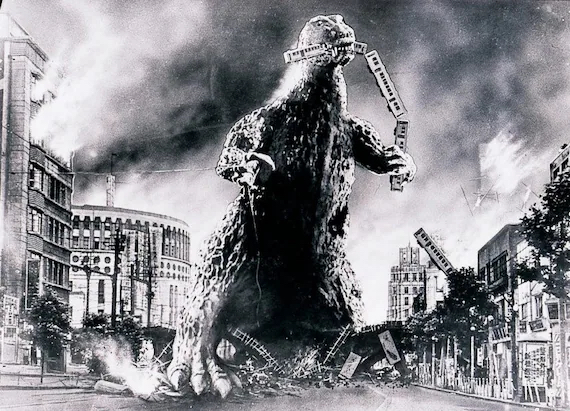Godzilla (or Gojira as the Japanese original calls this monster) is a cross-cultural franchise begun in 1954 in post-war Japan. Since then, the monster has mutated and invaded a number of other nations. The first attempt to launch an American Godzilla film occurred in 1998 when TriStar released Godzilla and Godzilla the (animated) series. This attempt petered out due to bad reviews and lacklustre sales at the cinema. A much more successful effort, also named simply Godzilla, was released by Legendary Pictures in 2014. This was followed by the launching of the Monsterverse, by Godzilla: King of the Monsters (2019), and Godzilla vs. Kong (2021). The Monsterverse also includes the King Kong movie Kong: Skull Island from 2017, an animated Netflix series called Skull Island (2023) and a major Apple TV+ series named Monarch: Legacy of Monsters both released in 2023. The feature film Godzilla x Kong: The New Empire is set to be released in 2024.
Not all climate fiction scholars are happy about adding Godzilla movies to the corpus of climate fiction. Most Godzilla films are extraordinarily pulpy and low-brow, and thus complicate the prevalent idea that cli-fi is a fundamentally critical genre capable of helping readers and movie audiences understand the urgency of the situation, and that may even provide readers “with the beginnings of the roadmap we so sorely need to achieve a global society that is both abundant and sustainable.” The US Godzilla films seem utterly uninterested in providing such roadmaps. In fact, many of the Monsterverse films were heavily sponsored both by the US Department of Defense and by major energy and food corporations: actors that drive the climate crisis.
Even so, the various iterations of Godzilla are, as Sean Rhoads and Brooke McCorkle have argued, clearly about the environment and how human (military and extractive) activities have eroded the natural world. This is clear from the very beginning when Godzilla rises as an angry avatar of a much abused and irradiated planet only to be exposed to even more violence from the military-industrial complex. It is made explicit in Godzilla: King of the Monsters (2019) where a scientist describes humanity as an “infection” and Godzilla and various other monsters as agents of ecological renewal.
There is much to complain about in this short passage. For starters, humanity (rather than the fossil fuel economy) and overpopulation in the Global South are blamed for the climate crisis. Also, the scientist turns out to be in support of a profoundly misguided eco-terrorist action, this while the military-industrial complex is leveraged as the saviour of both humanity and the planet. Even so, it is obvious that Godzilla: King of the Monsters is a type of (very conservative and pro-military) climate fiction. That it is reactionary is not surprising when considering the fact that the US Department of Defense contributed marines to Godzilla (2014) in return for the right to edit the way the military is represented in the film, but this does not change the fact that it is a narrative about environmental destruction and climate change. It does not provide the roadmap we sorely need to create a sustainable society, but it does talk about climate change and it was seen by a vast global audience (unlike most other cli-fi narratives).
While no Godzilla film is overtly about food and eating, it is obvious that Godzilla’s presence makes it difficult for people to catch, grow, produce, transport and eat food. This is especially obvious in the early Godzilla movies. Godzilla disrupts fishing, agriculture and the food system and the food system in its entirety. In the first Godzilla movie, the eponymous monster destroys a fishing vessel and the presence of the monster causes fishing to fail entirely in the region. This is why scientists are sent from Tokyo. When Godzilla climbs up on land, he lays waste to the farms in his way. Godzilla does not help us understand food in terms of diets, but it illustrates the ruinous effect that extended, extractive violence may have on the food system.It must also be noted that the first Godzilla film was partly a response to the havoc caused by the thermonuclear bomb Bravo on March 1, 1954, at the Bikini Atoll. The 15 megatonnes bomb, 2.5 times the predicted yield, pulverized a large amount of coral from the surface of the atoll. The radioactive fallout produced by the detonation contaminated much of the area, forced already exiled islanders further away from their ancestral homes, and also affected the crew and the catch of the Japanese fishing vessel Daigo Fukuryū Maru. When this boat returned to harbour with acute radiation syndrome and severely radiated and inedible tuna, this directly inspired the making of the first Godzilla film. In this way, the 1954 Godzilla narrates the monstrous experience of not being able to source edible food from the ocean any longer.
(Thanks to Tom at Spy Culture for noticing errors in an earlier version of this post).

